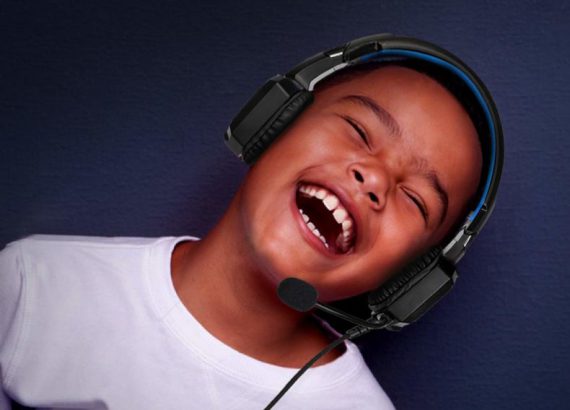Kinesthetic learning, also referred to as tactile learning, encompasses a learning preference wherein individuals excel in acquiring. And retaining information through active physical engagement, movement, and direct hands-on experiences. These learners prefer to engage with material by actively manipulating objects, participating in activities. And using their senses of touch and movement to understand concepts. Kinesthetic learners often excel in environments where they can engage in tasks that involve physical movement. Such as experiments, role-playing, building models. Or participating in interactive simulations. This learning style is one of several identified in educational theory and is recognized for its effectiveness in catering. To diverse learning preferences.
In the kinesthetic learning approach, educators often incorporate dynamic teaching methods that encourage students to get physically involved in the learning process. Whether through experiments, simulations, role-playing scenarios, or interactive demonstrations. These activities not only capture students attention but also enable them. To internalize information more effectively by connecting it to physical experiences. By integrating kinesthetic strategies into their lessons, teachers can create an environment where students are actively engaged. Fostering deeper understanding and long-term retention of the subject matter.
Understanding Kinesthetic Learning
Understanding kinesthetic learning involves recognizing that some individuals absorb information best through physical engagement and movement. For these learners, simply hearing or reading about a concept may not suffice. They need to actively participate in hands-on activities to fully comprehend and retain information. Kinesthetic learners often excel in environments where they can engage their senses of touch, movement, and physical manipulation. These individuals may prefer activities such as experiments, demonstrations, simulations, or interactive projects. Where they can directly interact with materials and engage their bodies in the learning process.
Kinesthetic learning is rooted in the idea that movement enhances cognition. Research has shown that physical activity can stimulate brain function and improve memory retention. By engaging in activities that require movement, kinesthetic learners not only absorb information more effectively. But also develop a deeper understanding of concepts. For example, when learning about geometric shapes, a kinesthetic approach might involve building shapes with blocks or tracing shapes in sand. To provide tactile reinforcement of abstract concepts. This hands-on experience helps solidify connections between physical sensations and academic concepts, leading to improved comprehension and retention.
Educators who understand kinesthetic learning can leverage this knowledge to create more engaging and effective learning experiences for their students. By incorporating movement-based activities into lessons, teachers can cater to the needs of kinesthetic learners. While also providing valuable learning opportunities for students with other learning styles. Kinesthetic learning strategies not only enhance academic performance but also foster a positive. And dynamic learning environment where students are actively engaged and motivated to explore and discover new concepts.
The Science Behind Kinesthetic Learning
The science behind kinesthetic learning underscores the profound impact of physical movement on cognitive processes. Research has shown that engaging in physical activities stimulates various regions of the brain associated with learning and memory. When individuals move their bodies, they activate sensory receptors, which send signals to the brain, enhancing neural connectivity. Promoting the formation of new synaptic connections. This process, known as neuroplasticity, enables the brain to adapt and reorganize in response. To experiences, ultimately facilitating learning and skill acquisition.
Moreover, kinesthetic learning is closely linked to embodied cognition, a theory that posits that cognitive processes are deeply rooted in bodily experiences. Through movement and physical engagement, learners can embody abstract concepts and make sense of them in tangible ways. For example, when students act out historical events or perform science experiments. They are not only gaining knowledge but also embodying the subject matter, which strengthens their understanding and retention. This embodiment of learning helps bridge the gap between theoretical knowledge and practical application. Fostering a deeper and more holistic understanding of concepts.
Additionally, kinesthetic learning activates multiple sensory modalities, including touch, proprioception, and vestibular senses. Which play crucial roles in information processing and integration. By incorporating movement and hands-on experiences into learning activities. Educators can appeal to a wider range of sensory inputs, catering to diverse learning preferences and maximizing engagement. This multisensory approach not only enhances learning outcomes. But also promotes active participation and enjoyment of the learning process. Creating an enriching educational experience for learners of all ages.
Benefits of Kinesthetic Learning
Kinesthetic learning offers a plethora of benefits that cater to diverse learners and enhance the educational experience. Firstly, it promotes active engagement and participation, which can significantly boost students’ motivation and interest in learning. By incorporating movement and hands-on activities into lessons, educators can create dynamic and interactive learning environments that capture students attention and encourage them to become active participants in their own learning journey. This engagement not only fosters a deeper connection to the material but also cultivates a sense of ownership over the learning process, empowering students to take control of their education.
Secondly, kinesthetic learning is renowned for its ability to improve retention and understanding of concepts. Research suggests that physical movement can stimulate various areas of the brain, leading to enhanced cognitive processing and memory consolidation. When students engage in kinesthetic activities, such as acting out a historical event or conducting a science experiment. They are not only absorbing information through traditional means but also encoding it through physical experiences. This multi-sensory approach to learning allows students to form stronger neural connections, leading to more robust and enduring learning outcomes.
Finally, kinesthetic learning fosters the development of essential life skills, such as problem-solving, teamwork, and communication. Many kinesthetic activities require students to collaborate with their peers, negotiate solutions, and effectively communicate their ideas. These experiences mirror real-world scenarios and provide invaluable opportunities for students to develop critical skills that are applicable beyond the classroom. Whether it’s building a model, participating in a group project. Or engaging in a physical challenge, kinesthetic learning cultivates a range of competencies that are essential for success in both academic and professional settings.
Implementing Kinesthetic Learning Strategies
Implementing kinesthetic learning strategies in the classroom involves incorporating activities and techniques that engage students physically and encourage movement. One effective approach is to integrate hands-on activities into lesson plans, allowing students to manipulate objects, conduct experiments, or solve problems through physical interaction. For example, in a science class, students might participate in a simulation of the solar system by moving around the classroom to represent the orbits of planets. In mathematics, educators can use manipulatives such as blocks or counters to help students visualize and solve equations. Promoting a deeper understanding of abstract concepts.
Another key aspect of implementing kinesthetic learning strategies is to create an environment that supports movement and active engagement. This may involve rearranging classroom furniture to allow for more space, providing flexible seating options, or designating specific areas for movement-based activities. Teachers can also incorporate movement breaks into their lessons, allowing students to stretch, dance, or participate in brief physical exercises to recharge and refocus their attention. By integrating movement into the learning environment. Educators can cater to the needs of kinesthetic learners while promoting overall student well-being and academic success.
Furthermore, technology can be leveraged to enhance kinesthetic learning experiences. Educators can utilize interactive simulations, virtual reality experiences, or educational apps that encourage physical interaction and movement. For instance, students might use a touchscreen device to manipulate virtual molecules in a chemistry lesson or engage in a virtual scavenger hunt to explore historical landmarks. By embracing technology as a tool for kinesthetic learning, educators can offer dynamic and immersive learning experiences that cater to the diverse needs and preferences of students.
Kinesthetic Learning Beyond the Classroom
Kinesthetic learning extends far beyond the confines of the traditional classroom, finding application and relevance in various real-world settings. Beyond academic institutions, kinesthetic learning plays a vital role in professional development, vocational training, and skill-building workshops. For instance, in fields such as healthcare, manufacturing, and athletics, hands-on learning experiences are essential for mastering technical skills and procedures. Medical professionals often rely on simulations and hands-on training to hone their surgical techniques, while individuals in trades like carpentry or plumbing learn best by physically engaging with tools and equipment.
Moreover, kinesthetic learning is increasingly recognized as a valuable approach in team-building exercises, leadership development programs, and corporate training sessions. Activities that involve collaborative problem-solving, role-playing scenarios, or physical challenges not only foster camaraderie among participants but also enhance communication skills, decision-making abilities, and adaptability in dynamic environments. By incorporating kinesthetic elements into professional development initiatives, organizations can create more engaging and effective learning experiences that translate into tangible skills and competencies in the workplace.
Outside of formal education and professional contexts, kinesthetic learning also plays a crucial role in personal development and lifelong learning. Whether pursuing hobbies, mastering new skills, or exploring creative endeavors, individuals often rely on hands-on experiences to deepen their understanding and proficiency. From learning to play a musical instrument or mastering a new sport to experimenting with culinary techniques or practicing artistic endeavors, kinesthetic learning provides a pathway for individuals to explore their interests. Unleash their creativity, and expand their horizons beyond the classroom.
Overcoming Challenges and Misconceptions
In the realm of education, implementing kinesthetic learning strategies may encounter various challenges and misconceptions. One common misconception is the belief that kinesthetic activities are primarily suited for younger students or for subjects like physical education. Neglecting its potential across all age groups and disciplines. Another challenge is the perception that incorporating movement into learning detracts from academic rigor or disrupts classroom management. When in reality, well-designed kinesthetic activities can enhance learning outcomes and classroom dynamics.
To overcome these challenges, educators can start by fostering a deeper understanding of the science behind kinesthetic learning and its benefits. By providing evidence-based explanations and sharing success stories of kinesthetic integration in diverse educational settings. Teachers can dispel misconceptions and build confidence in the effectiveness of these methods. Additionally, offering professional development opportunities and resource. That equip educators with practical strategies for implementing kinesthetic techniques can help address concerns about feasibility and logistics.

Conclusion
In conclusion, kinesthetic learning offers a dynamic and effective approach to education that harnesses the power of movement and physical engagement to enhance learning outcomes. By understanding the unique needs and preferences of kinesthetic learners, educators can create engaging and inclusive learning environments that cater to diverse learning styles. Despite challenges and misconceptions, the benefits of kinesthetic learning are clear: improved engagement, retention, and understanding of concepts, as well as the development of essential skills such as physical coordination and problem-solving abilities.
As we reflect on the potential of kinesthetic education, it’s crucial to recognize the importance of embracing diverse teaching methodologies and promoting inclusive practices in our educational systems. By valuing and incorporating kinesthetic learning alongside other approaches, we can better meet the needs of all learners and foster a culture of lifelong learning and academic success.
Moving forward, let us continue to explore, innovate, and collaborate to unlock the full potential of kinesthetic learning in classrooms, homes, and beyond. Together, we can create enriching educational experiences that empower students to thrive and succeed in an ever-changing world.









